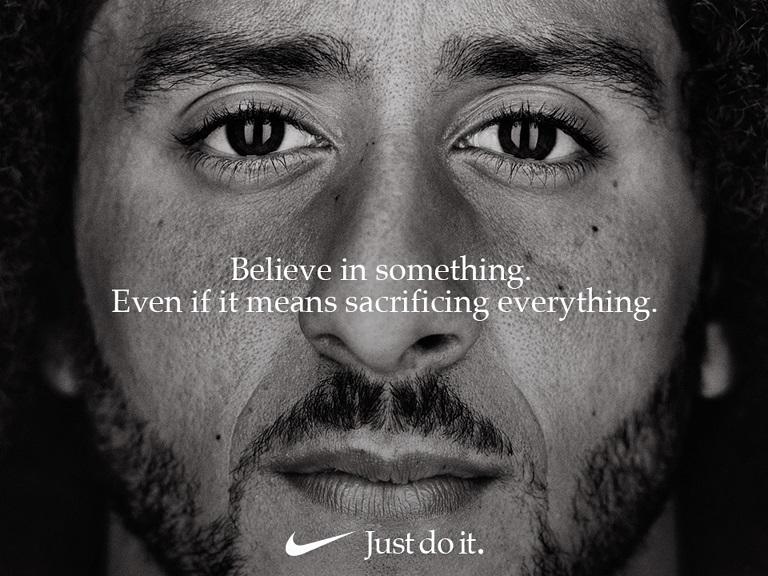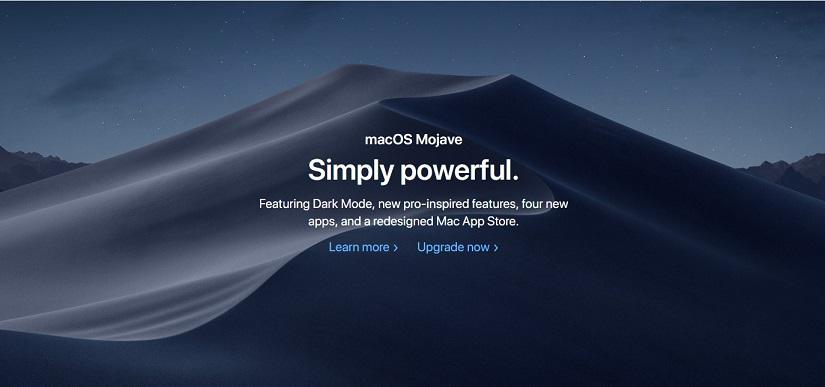8 Ways to Tell Your Most Compelling Brand Story
Ben & Jerry’s. Nike. Peloton. REI. Toms Shoes. Warby Parker. Yeti.
These brand names alone conjure vivid images of who they are and what they stand for—and these brands all have incredibly passionate audiences to boot.
That’s in part because each of these companies has a genuine brand story. A brand story conveys the history, purpose, and values of a business in a narrative that resonates with consumers and makes audiences feel emotionally connected.
How do you create a story like this for your brand? Just follow these eight tips from the experts.
1. Know Yourself
Per Lisa Barone, CMO at creative agency Overit, step one for brands is figuring out who they are.
“What do they believe as an organization, what are their brand tenets that will last the test of time, what’s truly unique about their offering, what does their voice sound like?” Barone asked. “So many times we assume that everyone in the organization knows who we are … until someone does or says something that isn’t in alignment.”
Brenda Della Casa, branding and digital media expert at digital consultancy BDC Digital Media, agreed.
“I cannot tell you how many times I have worked with clients big and small, famous and not, who had no real understanding of their brand,” she said. “They knew their name and logo, but when it came to what they stood for, what their clients really needed from them, and what kinds of messages they were sending, things got tricky.”
This requires some introspection. Or, as Caroline McNally, co-founder of brand strategy agency Global Brand Works, put it, you need to listen, look and leverage:
- Listen to customers, prospects, and employees about their motivators when making decisions about your brand.
- Look at what your competition is doing and what marketplace trends are.
- Leverage this to figure out who you are and what you stand for.
“In order to create an authentic brand story, a company needs to take a clear stand on a particular problem it intends to solve, define its positioning, create alignment between positioning and operations … and be 100 percent transparent throughout its development,” added Andy Mura, head of marketing at onboarding application Userlane.
That’s arguably what Nike did in its recent campaign with Colin Kaepernick, NFL player turned activist.

It was divisive—but proved the brand clearly knows what it stands for. And, despite criticism, it has paid off handsomely.
2. Have a Clear Vision
Once a brand has figured out self-identity, it must stay true to itself and remain consistent, said Molly Hocks, who works in client and account services at digital marketing agency Aimclear.
“Show people … don’t tell them. Build your story from the ground up and come at the process with good intentions,” she added. “Don’t try to sell yourself to people, but rather, explain to them who you are as a company.”
This also includes how the business has changed and what makes it unique.
Look no further than cooler brand Yeti, which beautifully illustrates its vision and purpose in incredibly popular videos. Customers eagerly spend hundreds of dollars on pop on Yeti products.
One way to make sure that your brand is staying consistent is to develop a vision statement. This short description will help define your brand’s values and plans for the future, and it will also serve as a useful reference tool. When you’re considering launching new campaigns or exploring new partnerships, refer to your vision statement to make sure you’re staying consistent.
3. Find Your Audience
You can’t tell a good story if you don’t know who you’re talking to.
Dino Villegas, associate professor of practice in marketing at the Rawls College of Business at Texas Tech University, said the key is to pick the right demographic for your brand and then “understand its motivations, fears, needs, wants, and dreams.”
Barone agreed the next step after self-discovery is understanding your target audience from a genuine human level.
“What do they value? What is the larger benefit you offer them—not what will help their life right now, but how you will allow them to improve their overall situation,” Barone asked.
Peloton, the $2000 stationary bike with a cult-like audience, had to fine-tune its brand story last year to appeal to a wider audience segment that was less affluent but still willing to make a big purchase for a convenient fitness option at home. And, after rolling out a new campaign and financing options, it’s a $4 billion company now.
Hocks, too, recommended defining how the brand connects with people.
“Look at creative messaging you have done in the past and what resonates best with your audience,” she said. “How are consumers engaging with your brand? Did certain creative messaging lead to an uptick in website visits, did people click/convert, are more people searching for you, etc.?”
This insight helps guide interactions with customers and forge stronger relationships. Indeed, Mura said a great brand story can create a true fan base as long as it is supported by facts and actions.
“Brands work hard to build this relationship with their audience and once that connection is made, the relationship is special and must be cherished and maintained,” added Andy Vitale, UX director at financial services firm SunTrust Bank. “As a UX designer, having the opportunity to leverage the authenticity of the brand and create immersive experiences can be magical. Not only have I seen brand loyalty increase exponentially, but I’ve seen some of the most outspoken critics become the biggest brand advocates.”
4. Narrow Your Expertise
Once you know yourself and your audience, you’ll find what Barone called “that sticky center,” or “the intersection of what’s unique and weird about you, and what your audience craves.”
This is where the strongest brands are formed, she added.
“Once that’s established, use it to create your key messaging … and be consistent about it,” Barone said.
We see this in practice with a brand like REI closing its doors on Black Friday and inviting its customers to #OptOutside, which has turned into its own post-Thanksgiving tradition among REI fans.

Derek Gleason, content lead at data-driven marketing training program CXL Institute, said brands should focus on the narrowest definition of expertise.
That’s what his former agency did with a group of pediatric urgent care clinics.
“We could’ve made an argument that anything related to children’s health was relevant and started cranking out blog posts on everything from how to get your children to eat more vegetables to wearing bicycle helmets,” he said. “Instead, we focused their content on answering a single question for which they were the experts: ‘Should I take my child to the emergency room or urgent care?’”
As a result, Gleason said the brand became an authoritative voice on pediatric health, and search engines better understood the site’s relevance, which resulted in higher rankings.
5. Find Your Narrative
Villegas said the signature story that represents a brand could be a standalone story or multiple stories that are part of a broader narrative.
“If you are not using a singular standalone story [like the story of the founder], mini-stories can create a narrative about the brand, recreate real-life experiences of customers, workers, providers, and others to tell a story,” he added.
Look at Ben Cohen and Jerry Greenfield, the founders of the eponymous Vermont ice cream company. Their story began in a renovated gas station in Burlington in 1978 and, over the years, they have built a global brand in part by keeping true to themselves and their values.

Image via Ben & Jerry’s
6. Keep It Simple
Hocks recommended keeping your brand story simple.
“How can you tell a story that will incite emotion? What problem is your company trying to solve? How did your company solve that problem? What does success look like?” she asked. “Make sure the story serves as a channel of continuation, not an end-point.”
Ron Maoz, head of digital marketing at accounting firm Clever Accounts, pointed to brands like Apple, Amazon, and Virgin, which have very clear, simple stories at their core.

Image via Apple
“Apple itself is a creative, path-breaking brand historically, and so it basically designs products for itself and anyone else who follows a similar value system,” added Josh Meah, CEO and “marketing perfectionist” at his site JoshMeah.com. “Basically, you build something someone else will love or something that you yourself will love.”
7. Be Human
But in order to connect, brands must also choose and embrace personas.

“In my marketing communication classes, I always tell my students to think about modern brands as a social actor that are in a constant real-life interaction with other users, stories, symbols, and discourses in an always-changing context,” Villegas said.
As a result, he recommends asking how you would describe your brand as a person—would it be agile or conservative, wise and experienced or young and bold? Taking time to consider these questions to build a persona or align your brand with an existing archetype will enhance your brand story. Once you establish a clear brand persona, you can maintain it.
“The understanding of the brand persona will allow you to understand how your brand should behave and what story or stories to tell,” Villegas added.
Della Casa agreed.
“Consumers want to know what services and products you have, but they also want to know what your brand personality is and who is working on the team,” she said.
Toms Shoes and Warby Parker, two D2C brands that have charitable components, have connected with an audience of consumers who want to do good in the world—and they’ve given away 60 million pairs of shoes and over 4 million pairs of glasses to people in need around the world as a result.
8. Don’t Evangelize Without It
And, said Bob Clary, director of marketing at software training company DevelopIntelligence, a brand should definitely not push out marketing content that has no story to wrap it around. Without a brand story, brand messaging and marketing content is typically vague, and it can be confusing and inconsistent.
Per Steve Geick, senior digital specialist at performance marketing agency Metric Digital, brands should embed their stories in every single asset.
“Leave no doubt in people’s minds what your story is and how they play a part in it,” he said. “Remember, it’s not about getting people to join you, it’s about using your story to join the customer’s life.”
Mura said a brand needs to live and breathe its story.
“Every unit must fully assimilate it and live by its core message before the story itself becomes part of the corporate identity,” he said. “The story, then, can’t simply be confined into the “About Us” section of the website. It needs to directly or indirectly permeate every piece of content, promotional message, email outreach, interview, and conversation with a customer.”
Vitale added that brands need to identify the type of content their particular audience wants to engage with.
“It’s about understanding the brand’s entire ecosystem and the experiences they create across touchpoints and mediums,” he said. “Successful brands listen to their audience and understand the context, both in terms of message and platform, in which they receive the story. Each connection that is built and strengthened will contribute to increase brand value and deliver upon the ultimate goal of brand loyalty.”
And, Hocks noted, at the end of the day, if people are eventually telling your story for you, then you know your brand story is effective, meaningful, and powerful.









Comments
Please read our Comment Policy before commenting.